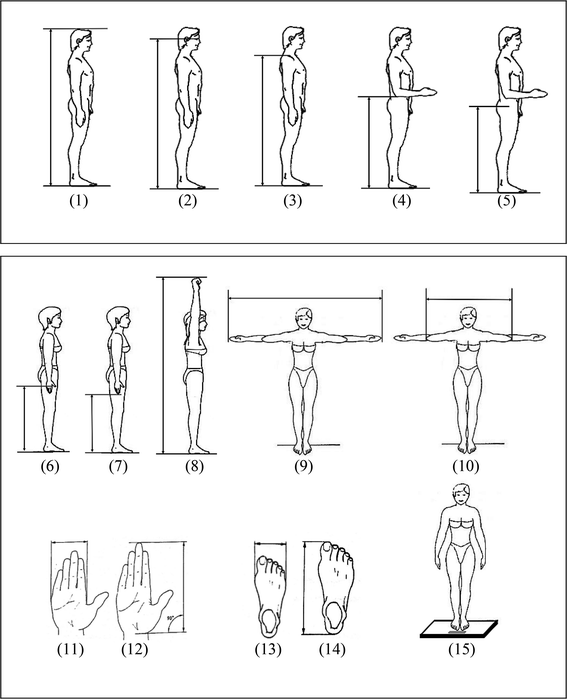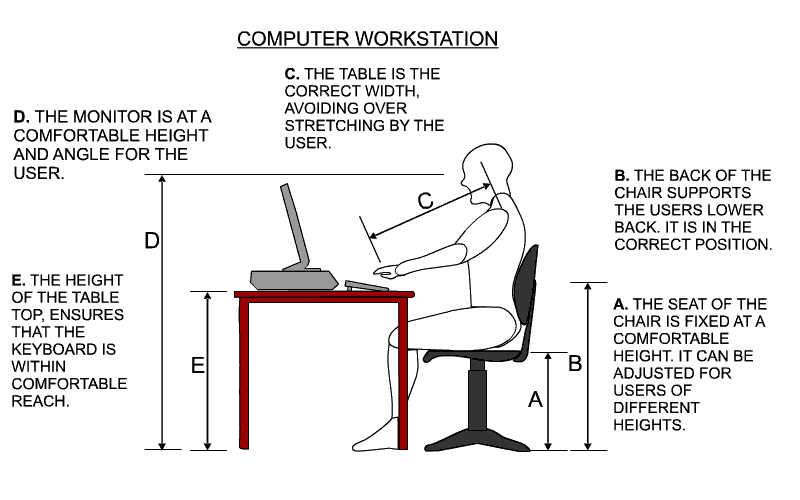
Sents and Marks, in a laboratory setting, showed that all children scored higher on the intelligence test when they were seated in furniture that better suited their body sizes compared to school furniture that was too large. Moreover, poor sitting posture on those ergonomically unfit furniture negatively affects the musculoskeletal system of the school students. The mismatches are the results of the fact that the majority of the administrations of educational institutions procure ready-made furniture which mostly fit fewer users (students) with lack of ergonomic principles. found significant high and low mismatch between classroom furniture and anthropometry of primary school students. Agha, in his study, found that the mismatches in seat height, seat depth, and desk height occurred for 99% of the students in the Gaza strip. Some authors have evaluated the mismatches between classroom furniture and the users (students) and consented on the fact that these mismatches may lead to increased pain and discomfort and tend to increase the risk of increasing musculoskeletal problems among school students. This survey also showed that prevalence of LBP among girls was higher than the boys. In a questionnaire survey, 53% of the school students claimed “sitting at school” as the reason for LBP.


Sitting for a long period of time in school causes low back pain (LBP) and upper back pain for the school students. While staying at school, children spend most of their time in doing different things for instance, reading, writing, drawing, and other related activities, which lead them to sit on their seats constantly for a long time. For fulfilling these purposes, they need to stay at their schools for a long time (on an average of 4 to 6 hours for each day). IntroductionĪ school is a place far from home where children go to be educated and also to be socialized for the need of the world. The paper also proposes furniture dimensions, which reduce mismatch percentage of students ranging from 90% to 10%. The results highlighted that desktop height and seat height were found too high and seat width was too small for all of the students. A significant degree of mismatch was found between furniture and student anthropometric measurements. Seven furniture dimensions were measured and fifteen anthropometric measurements were taken and they were compared to identify potential mismatch. Anthropometric measurements were accumulated from 300 students of these primary schools. To fulfill this perception, a survey has been conducted in 10 primary schools in Khulna, Bangladesh. Thus, it is crucial to use anthropometric data to coordinate the arrangement of school furniture. In this broadened time of sitting, poor fitting furniture can cause various types of musculoskeletal disorders and discomforts.
#Indian anthropometric dimensions for ergonomic design practice pdf manual#
This paper reports the salient features with content outline of the educational and free to use virtual anthropometric experiments manual developed which is being fine-tuned at IIT Guwahati.Students spend a large portion of their time in school. The feedback collected so far (online and also through direct demonstration surveys), confirms its usefulness both by the teachers and student-learners of Ergonomics specialisation and design programmes. The experiments are self-explanatory, downloadable and easy to perform. Some of these topic specific experiment sections are also backed with video demonstrations.A whole set of virtual laboratory module under development, for users feedback, has already been uploaded in the net. The topic opens with the introductory session where the subject matter and the laboratory experiment methodology in general was considered this was followed by ten specific topics with flash based self-learning modules and data support on Indian population was provided to have a ready reference.

To impart a feel of laboratory experimentation as well as application relevance to a greater number of learners, a virtual environment scenario could go along.A virtual presentation of ergonomics laboratory experiments on physical anthropometry and its design dimension consequences has been tried out. It has come to fore through many academic forum discussions and meetings that to internalise various ergonomics issues relevant hands on experiences on this are necessary. Ergonomics has become an integral part of design education curriculum, where input content demands demonstration through citing and analysing appropriate design experiences.


 0 kommentar(er)
0 kommentar(er)
